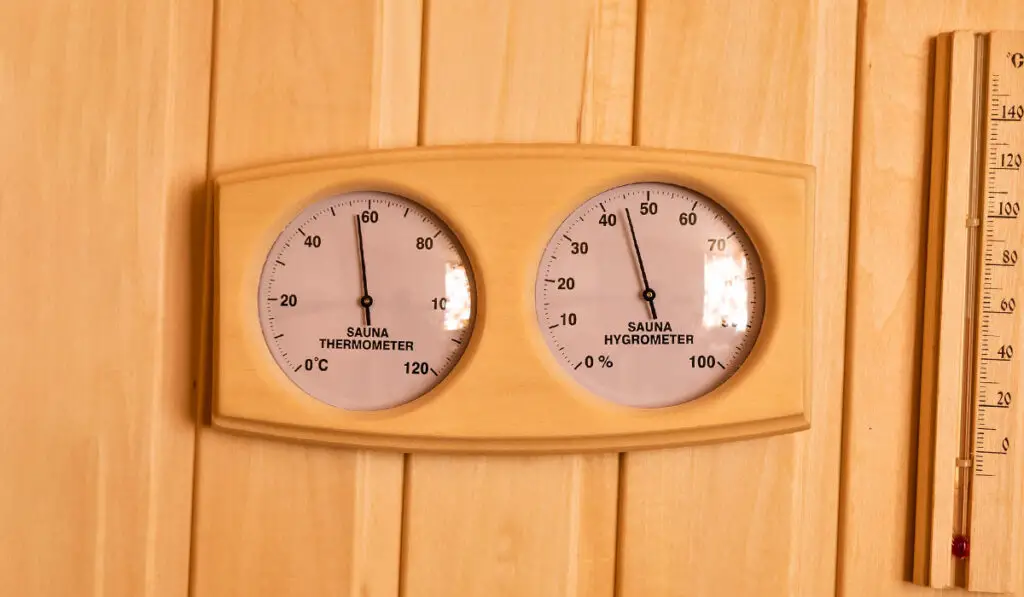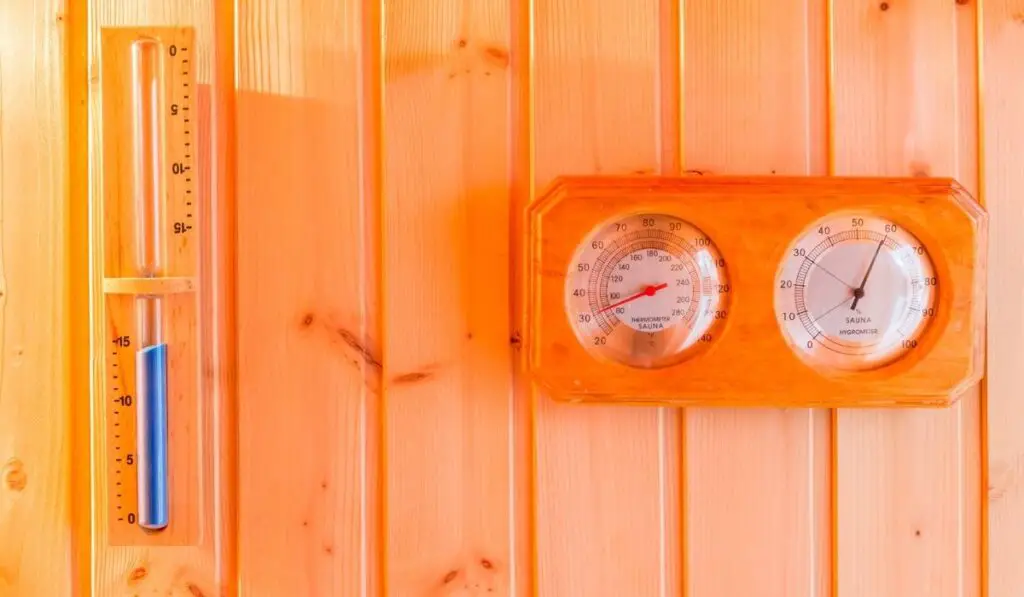Routine sauna visits help soothe and prevent sore muscles and joints. Additionally, they have compounding health benefits, such as improved circulation and skin health. For many sauna enthusiasts, sweating it out in the sauna is a multiple-time-per-week endeavor. However, if you grow accustomed to saunas, you may start to wonder what the best temperatures are for them.
Traditional saunas are best at 160 to 200°F (71 to 93°C), infrared saunas are ideal from 100 to 150°F (38 to 66°C), and steam rooms are best at 90 to 120°F (32 to 49°C). However, the way they feel is very different and there are different variables to consider as well.
The lower temperatures of infrared and steam rooms seem different on paper (more on those in our guide), but the way they heat your body makes them feel hotter. Steam rooms have high humidity, which makes them feel hotter and infrared saunas heat your body directly instead of the surrounding air. To learn all about the best sauna temperatures, how they differ, and which one is the hottest, continue reading this detailed guide.
What’s the Best Sauna Temperature?

The best sauna temperature depends on the type of sauna. For example, steam rooms and traditional saunas don’t have the same ideal temperatures. Traditional saunas produce dry heat with very low humidity. Since the humidity is so low when you sweat, it evaporates and cools your body.
Steam rooms have 100% humidity and are full of hot steam. Their temperatures don’t get nearly as high as traditional saunas but often feel hotter. The reason for this is two-fold. Humid air and steam transfer heat to you better than warm, dry air. Additionally, your body can’t cool itself through sweating because it’s already saturated with moisture from the steam.
Similarly, infrared saunas have a lower temperature than traditional saunas too. Instead of heating the air in the room, they use infrared radiation to warm your body directly. The infrared waves penetrate your skin and heat your tissues from the inside. Here are how the best temperatures of traditional saunas, infrared saunas, and steam rooms compare:
| Sauna Type | Ideal Temperature |
|---|---|
| Traditional (Finnish) sauna | 160 to 200°F (71 to 93°C) |
| Infrared and far-infrared saunas | 100 to 150°F (38 to 66°C) |
| Steam rooms | 90 to 120°F (32 to 49°C) |
The best temperature of each type of sauna falls within the range provided in the table. It’s subjective; the best temperature for you might not be the best for someone else. Ideally, you’d want to increase the temperature as you get more sauna visits under your belt.
To ensure you reach the best temperature during your sauna sessions, you’ll need a way to measure the temperature. Otherwise, you’d just be guessing. A sauna thermometer with a humidity measurement, like this Northwood Sauna Thermometer (on Amazon), is always a good choice.
What Sauna Temperature is Best for Losing Weight?
As we’ve explained before in our guide on saunas and weight loss, weight loss occurs when your body burns more calories than it consumes. Saunas can help contribute to weight loss by increasing your body’s metabolism. Many experts agree that the high heat of a traditional sauna above 160°F (71°C) is enough to boost your metabolic rate by over 20%.
The metabolism boost doesn’t last forever; it goes into effect while you’re in the sauna and stays only a few hours after leaving. Essentially, routine sauna use has the same calorie-burning effect as low-intensity cardiovascular exercise. The high heat makes your heart rate increase, which burns more calories.
Another way that saunas can help you lose weight is through sweating. Many people can lose five pounds or more just through sweating in a hot sauna. This might be useful for people that need to quickly cut a few pounds for something like a sports match. However, be careful if you are intentionally dehydrating your body. It could have life-threatening results.
Are Different Types of Saunas Different Temperatures?

The various types of saunas do have different temperatures. The reason they have different temperatures is that they heat you with different methods. Even though each type of sauna has a different temperature, they don’t always feel that way. The mix of humidity and temperature is what makes the saunas feel hotter than one another. Here is how the three most common ones work:
- Traditional (Finnish) saunas – electric, gas, or wood-burning stoves provide the dry heat to traditional saunas; they are most often kept between 20 to 40% relative humidity and temperatures between 160 to 200°F (71 to 93°C)
- Infrared and far-infrared saunas – electrically powered infrared panels generate infrared beams which directly penetrate the top layer of your skin and heat it; the humidity levels are always the same as the rest of the building with temperatures ranging from 100 to 150°F (38 to 66°C)
- Steam rooms – steam generators and pumps distribute hot steam into the room, causing the temperature to rise; the humidity levels are 100%, and the temperatures range from 90 to 120°F (32 to 49°C)
Are Saunas or Steam Rooms Hotter?
Many people find the high humidity and moderate temperatures of a steam room unbearable compared to the high heat and lower humidity levels in a traditional Finnish sauna. Humidity is the critical factor to steam rooms often feeling hotter. As we discussed earlier, steam is better at transferring heat to your body, and it also prevents the evaporative cooling effect from sweat.
With that being said, you still sweat in a steam room. It just doesn’t cool you off as much because it can’t evaporate. The main reason sweat cools you is because the liquid removes heat as it evaporates into the air. Since the steam room is 100% saturated with water already, your sweat does not evaporate, leaving you hot and with increased perspiration.
In contrast, infrared saunas don’t feel as hot as traditional saunas or steam rooms. The air temperatures inside of them are much lower than traditional saunas but higher than steam rooms. They heat your tissues by penetrating your skin with their infrared wavelengths. As such, most infrared sauna visitors can tolerate much longer stays than a steam room or traditional sauna.
